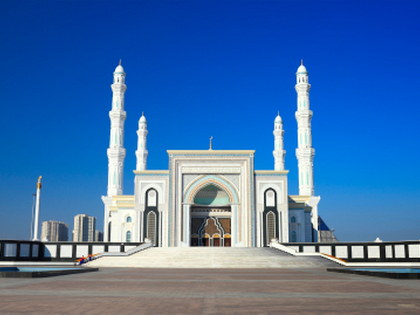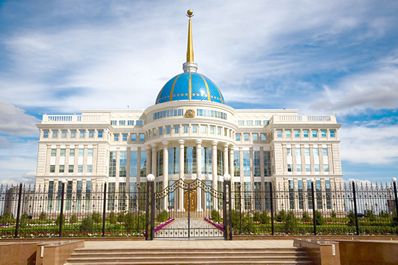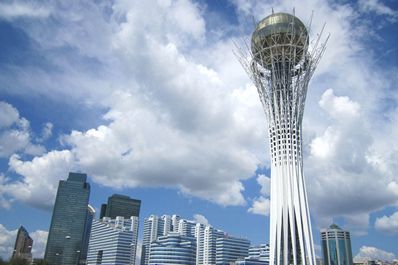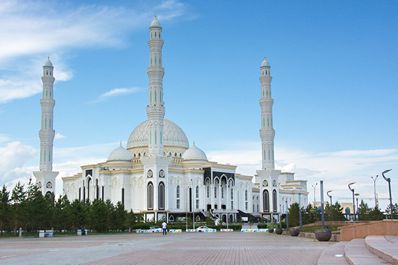Astana - Capital of Kazakhstan
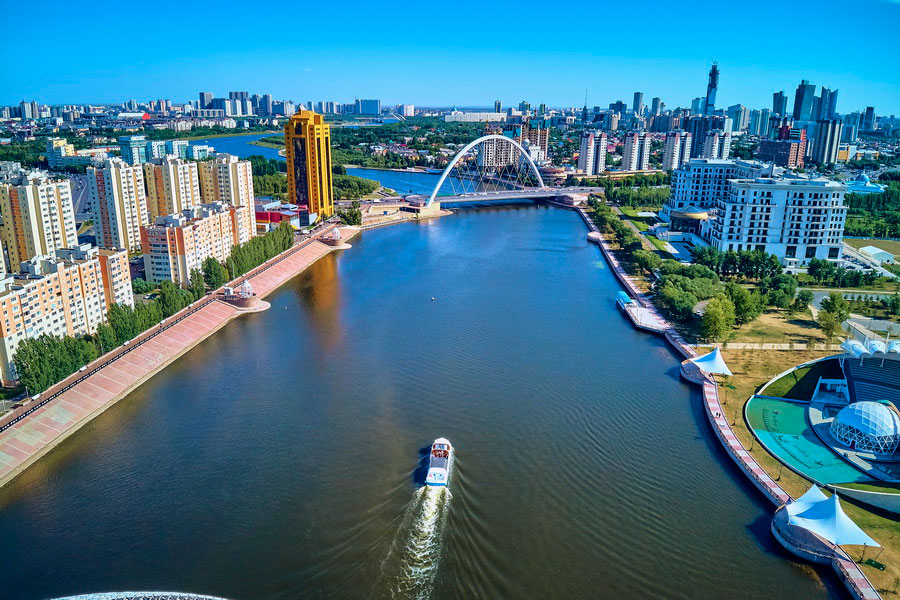
Tours, Attractions and Things To Do in Astana
Astana Travel Guide
Astana, the capital of Kazakhstan, is the country's most modern and stylish city, attracting visitors with its unique architectural designs. The city sits on the banks of the Ishim River, which separates it into the right and left banks. The left bank is particularly stunning, home to all the distinctive structures.
Gradually, banks and other significant organizations are relocating their headquarters to Astana from Almaty, the former capital of Kazakhstan. It is advisable to avoid visiting Astana for tourism purposes during the cold season, as even those from Siberia might find the temperatures unbearable. Winter in the city is marked by harsh, biting winds. Conversely, summers in Astana can be quite hot.
Astana takes great pride in hosting the international specialized exhibition EXPO-2017. This event significantly boosted Kazakhstan's status on the global stage. Over three months, more than 4 million people visited the exhibition. Today, the "Nur-Alem" sphere, which was the main building of the EXPO, houses a museum.
Astana is also renowned for its Barys hockey club, which enjoys fame far beyond its home city. The team's matches consistently attract packed stadiums.
The capital of Kazakhstan is certainly a city worth visiting at least once in a lifetime.
History of Astana
The modern capital of Kazakhstan, Astana, is situated at the crossroads of the caravan routes of the Great Silk Road. Archaeological excavations have revealed that people inhabited this area as far back as the Bronze Age and Early Iron Age.
The medieval settlement of Bozok, an agricultural community founded in the 7th-8th centuries AD, was discovered just 11 kilometers from the center of present-day Astana.
In the 1830s, the town of Akmolinsk emerged on the site of Akmola. Serving as a military and economic regional center, it was part of the province of the Siberian Kirghiz.
On March 20, 1961, Akmolinsk was renamed Tselinograd, which then became the center for developing the virgin lands. The city played a crucial role in supplying the Soviet Union with grain.
In 1992, Tselinograd reclaimed its historical name, Akmola. On May 6, 1998, Akmola, which had already become the capital of Kazakhstan, was renamed Astana (from the Kazakh "astana," meaning "capital"). Later, on March 20, 2019, the city was renamed Nur-Sultan. However, on September 17, 2022, President Tokayev signed a decree changing the capital city's name back to Astana. The decree took effect from the day of its publication.
Back in 1997, around 300,000 people lived in Astana, spanning an area of 258 square kilometers. By 2016, the capital's population had exceeded one million, and the city had expanded to cover nearly 800 square kilometers.
Landmarks and Attractions in Astana
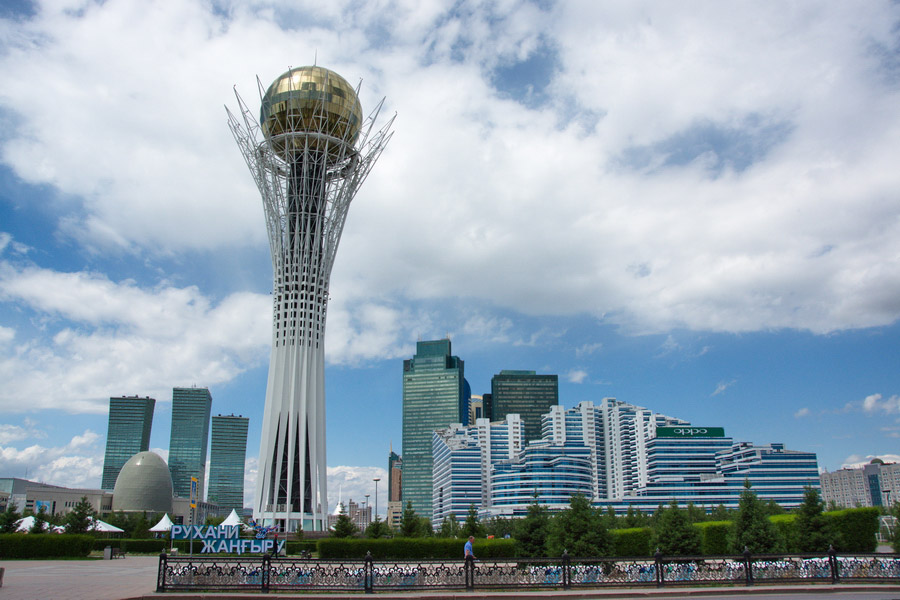
Astana is a city brimming with sights. They can be found around every corner, with the left bank of the capital being especially renowned.
The symbol of the Kazakh capital is the Baiterek monument, representing the tree of life with strong roots and an upward reach toward the sky. At its center is a globe featuring autographs from representatives of 17 world religions. Baiterek offers the most stunning views of Astana.
The "Kazak Yeli" (Land of the Kazakhs) Stella is located in Independence Square, symbolizing Kazakhstan's independence. The monument's height of 91 meters is significant, as Kazakhstan gained its independence in 1991.
Official events take place at the Palace of Independence, a building with a highly unique architectural design, like many other sites in Astana.
The city also hosts the Palace of Peace and Harmony, shaped like a pyramid. This venue holds congresses for leaders of world religions.
Akorda, the residence of the President of Kazakhstan, is another symbol of the city.
The main building of the Kazakh National University of Arts, situated across from the Palace of Peace and Concord, is a unique city landmark.
The triumphal arch "Mangilik Yel" is another symbol of Astana, popular among newlyweds. Visitors to the arch can watch clips from Kazakhstan's history and access the observation deck.
The "Peace Wall" monument, featuring a massive built-in LED screen, is truly awe-inspiring.
The oldest building in Astana is the Saken Seyfullin Museum, a wooden house built in 1846. Even locals visit this museum.
The city's longest building, the House of Ministries, is quite intriguing. In reality, there are two buildings, separated by a square with pedestrian bridges that form a single composition. From above, the curved shape of the House of Ministries resembles a soaring eagle.
The Singing Fountain and Kazakhstan's tallest Ferris wheel also draw tourists.
Astana's bridges are special attractions. The most beautiful is the Atyrau Pedestrian Bridge, made of 2,500 parts. The bridge attracts tourists and locals throughout the day, so for beautiful photos without crowds, visit at dawn. The Seruen Pedestrian Swinging Bridge is also worth seeing. Though it doesn't actually swing, touching the railing adorned with ancient nomadic symbols allows you to experience the interplay of physics and gravity. The arch-shaped Karaotkel Bridge, one of Astana's symbols, is not to be missed either.
The largest flag of Kazakhstan, situated at a height of 110 meters and covering an area of 450 square meters, is visible from anywhere in Astana.
Another notable landmark in the capital, and certainly not the least in terms of height, is the 75-story Abu Dhabi Plaza skyscraper, the tallest in Central Asia. The complex consists of five towers, with the tallest reaching 320 meters, and includes residential, hotel, business, and shopping and entertainment facilities. Many sections of Abu Dhabi Plaza have already been opened, and as of early 2022, the complex is 97% complete.
Astana Museums
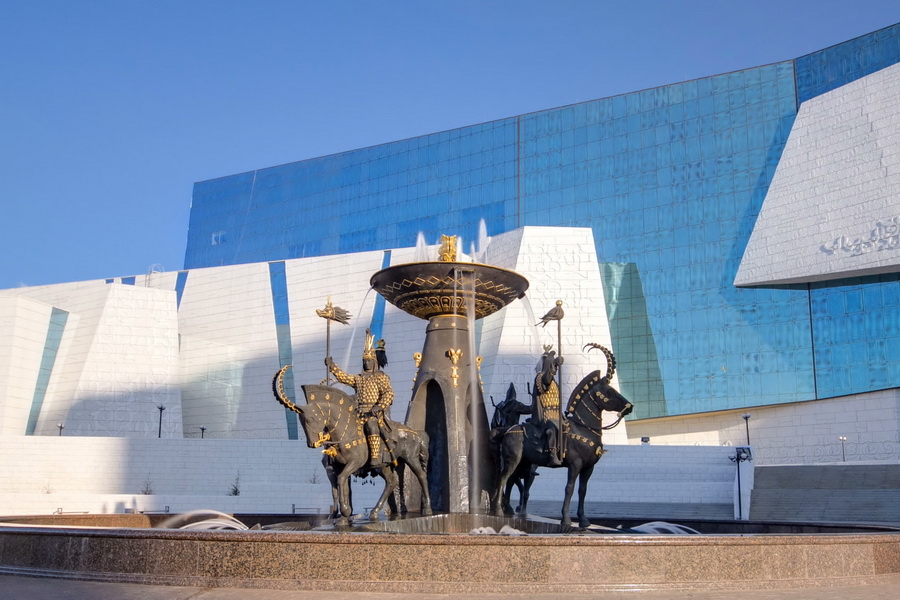
Astana is home to several museums that cater to a variety of interests. For those who might think museums are boring, they clearly haven't visited the Nur Alem Museum of Future Energy. Established following the international exhibition EXPO-2017, Nur Alem is a sphere considered to be the tallest in the world. This museum is truly amazing, offering an interactive journey with features such as talking robots, an aero tube for experiencing wind movement and taking unique photos, a glass bridge that only the daring will cross, and much more. While we could describe the exhibits in detail, nothing compares to experiencing it for yourself. The National Space Center is an open-air museum showcasing life-size models of Soyuz, Zenit, and Proton launch vehicles, as well as the Buran inter-orbital spacecraft. Other noteworthy museums in Astana include the State Historical and Cultural Museum-Reserve Bozok, Seyfullin Museum, National Center of Manuscripts and Rare Books, Museum of Firefighters and Rescuers, and Museum of Modern Art. Additionally, the capital is home to the Museum of the First President of the Republic of Kazakhstan, the National Museum of Kazakhstan, and the National Military and Patriotic Center of the Armed Forces.
Astana Theatres
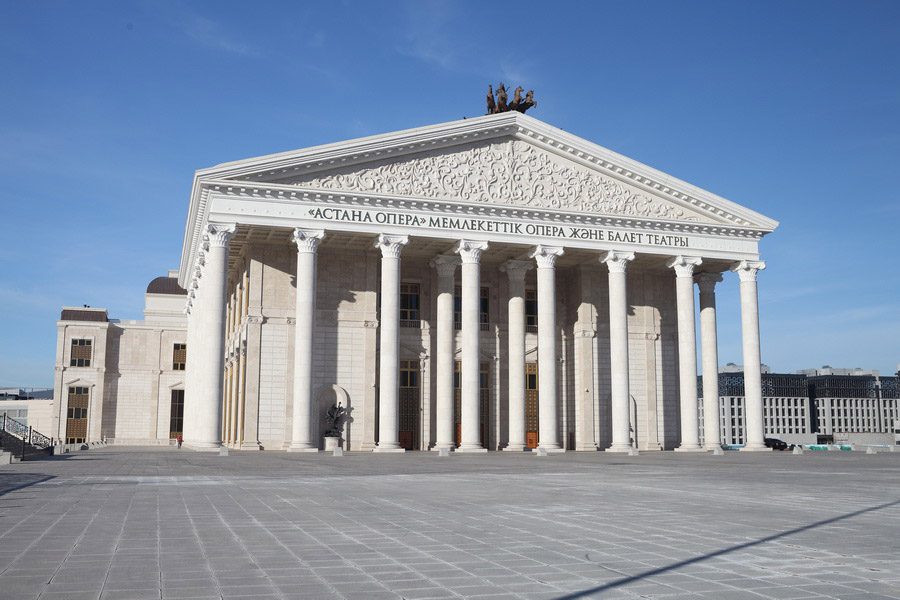
The thriving theatre scene in Astana attracts an increasing number of enthusiasts each year.
Astana Opera, the largest theatre in Central Asia, spans 64 thousand square meters and boasts a classical design infused with elements of Kazakh national culture. Its stage, crafted from rare wood, provides exceptional acoustics. The theatre also houses Kazakhstan's largest crystal chandelier, weighing 1.5 tons. World-leading theatres frequently tour the Astana Opera.
Other theatres in Astana include the Astana Ballet, the Kuanyshbaev State Academic Kazakh Musical Drama Theater, the Puppet Theater, the Musical Theatre for Young Audiences "Zhastar", the Gorky Drama Theater, the Astana Musical Theater, the Sovremennik Youth Theater, and the State Dance Theater "Naz."
Entertainment, Parks and Shopping in Astana
Astana Parks
While Astana has fewer green spaces than Almaty, each park is an artistic masterpiece.
Astana's Botanical Garden, established in 2012 and opened in 2018, houses nearly 90,000 trees and shrubs. The garden features jogging and cycling paths, and in winter, an ice rink. Additionally, the capital's largest fountain, Toikazan, sits within the botanical garden. This copper bowl with decorative elements forms the centerpiece of a dry fountain.
The Capital Park of Culture and Recreation (Central Park) appeals to both tranquility-seekers and amusement ride enthusiasts. In summer, it hosts an aqua park, while in winter, it offers an ice rink. The city's oldest tree, a 120-year-old black poplar, grows in Central Park.
Expopark, located within the EXPO-2017 territory, is ideal for families with children.
Triathlon Park Astana caters to outdoor activities such as skiing, biking, and running. The park annually hosts IronMan 70.3 competitions.
Other parks in Astana include the Presidential Park, Zhetisu and Bauyrzhan Momyshuly Parks, Linear Park, and more.
Though not a park, Nurzhol Boulevard (water and green boulevard) remains a favorite among the capital's residents and visitors.
Ailand Family Recreation Center is noteworthy for housing the world's only oceanarium situated more than three thousand kilometers from the ocean.
Shopping in Astana
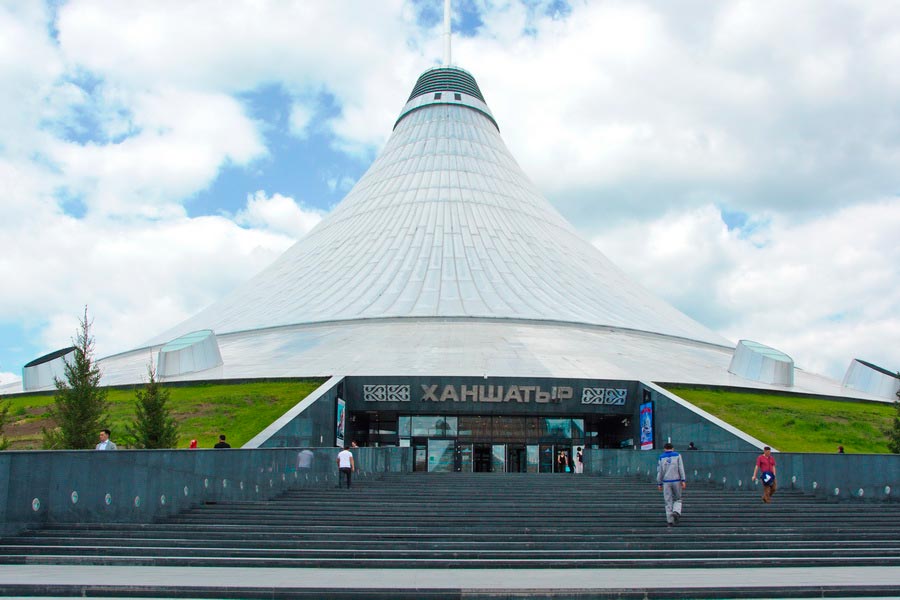
It's nearly impossible to visit Astana without indulging in some shopping. With an abundance of shopping and entertainment centers, you'll undoubtedly find yourself exploring at least one.
No tourist can resist a trip to the "Khan Shatyr" shopping center. This world's largest tent-shaped building holds a spot in the Guinness Book of World Records. Khan Shatyr features brand stores, a water park with an artificial beach that maintains a temperature of +35 degrees year-round, cinemas, restaurants, and children's playgrounds.
For those who enjoy a leisurely shopping experience, Mega Silk Way, Asia Park, Keruen, KeruenCity, Saryarka, Aruzhan, Almaty Mall, and other shopping centers are sure to delight.
Food in Astana
The most delectable food can be found in establishments situated on the left bank of the capital.
Kazakh Cuisine

Kazakh cuisine can be savored in numerous cafes and restaurants throughout Astana. For a truly memorable experience of national cuisine, consider visiting Qazaq Gourmet, a high-end Kazakh restaurant.
Vegetarian Restaurants
Astana is home to a vegetarian cafe called Veggie House. Additionally, you can find vegetarian options in the many Korean and Japanese establishments throughout the capital.
Coffee Shops and Bakeries
An abundance of coffee shops can be found in the city, but the best coffee is typically served in the central part and establishments with at least two branches. The network of French bakeries will delight guests and residents with freshly-baked croissants and other pastries. Astana also offers other bakeries that serve fragrant baked goods.
Public Transport in Astana

Transport infrastructure in the capital works perfectly and covers the whole city.
Buses
There are 92 bus routes in Astana.
Schedule of all buses is different, but in average they run from 7:00 to 20:00. Buses go frequently, the waiting time for the necessary route does not exceed 15 minutes.
Fare in buses is 90 tenge. You can pay for the trip with a transport card or scanning a QR code.
Taxi
Taxi is one of the most common modes of transport in the capital. There are several cab services in Astana, and the car can be called by application or by calling the required taxi company.
Car Rental
There are several companies in the city where you can rent a car. And you can rent a car not only in the standard class, but also in the business and luxury classes.
Other Ways
In Astana, there is a city bicycle rental with a large number of bicycles. They can be rented almost in every street of the city. To ride, you need to register with the system by adding your bank card and phone information and paying a deposit.
The city also has an air cab, Aue Taxi, which carries business-class passengers in highly mobile helicopters.
There are river trolleys running along the Ishim River. This is not the kind of transport that residents of the capital city use all the time. Streetcars often conduct excursions, although there are passenger routes, too. The main point to pay attention is that the tramway operates only in warm seasons.
How to Get to Astana
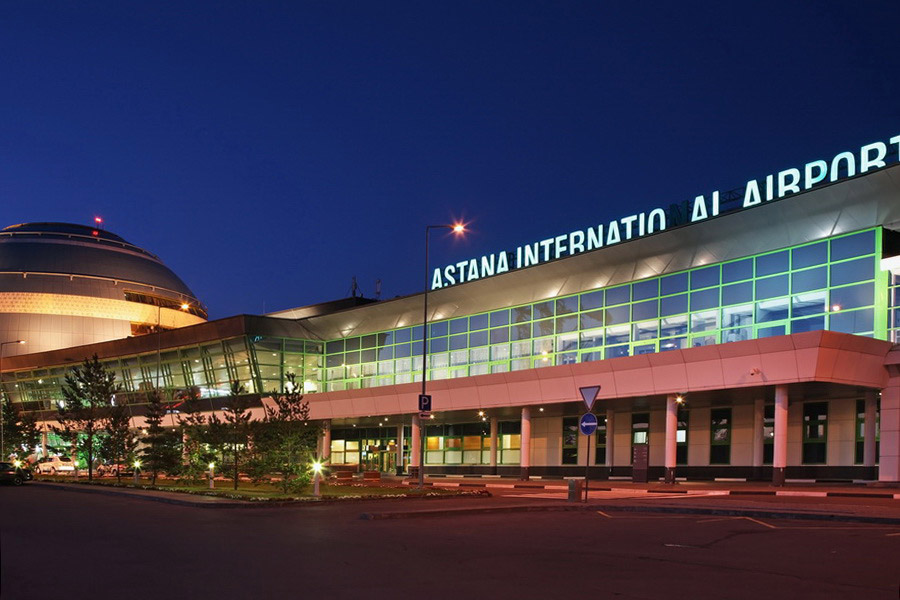
The most convenient way to reach the capital of Kazakhstan is by air. Astana boasts an international airport that welcomes flights from various countries worldwide. Airlines such as S7 Airlines, Turkish Airlines, Belavia, Lufthansa, Flydubai, Aeroflot, Nordwind, Lot, Ural Airlines, Wizz Air Abu Dhabi, Red Wings, and Uzbekistan Airlines all service the Kazakhstani capital.
The national carrier, Air Astana, offers scheduled flights from Astana to several international destinations, including Budapest, Frankfurt am Main, Podgorica, Abu Dhabi, Dubai, London, Antalya, Istanbul, Warsaw, and Kiev. Additionally, Kazakh airlines like Air Astana and Scat provide flights to numerous CIS countries and domestic locations within Kazakhstan.
Train services are available from Almaty and other Kazakhstani cities to Astana. Travelers from Russia can also opt to drive, though it would take a bit longer.
Languages Spoken in Astana
The official language of Kazakhstan is Kazakh, which many residents of the capital are proficient in. Russian serves as the international language of communication, and it's widely spoken throughout the city. Assistance in English is readily available in tourist-centric locations.
Currency in Astana
The national currency of Kazakhstan is the Tenge, and all transactions are carried out using it. Places ranging from supermarkets and eateries to beauty salons accept payment via Visa and MasterCard from any global bank.
Among foreign currencies, the US dollar is most prevalent, followed by the euro and the Russian ruble. You can exchange your currency for Kazakh tenge at any bank in Astana, as well as at Kazpost offices and several currency exchange bureaus.
Safety in Astana
Astana is a peaceful and safe city. Law enforcement agencies maintain order, making it safe to explore the city, whether it's in broad daylight or late at night.


